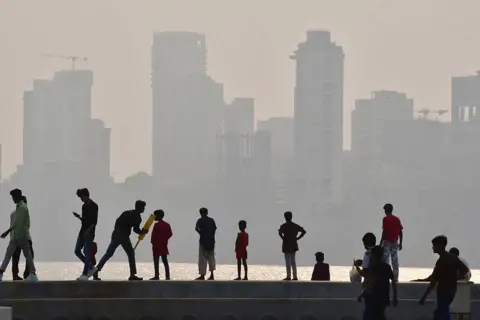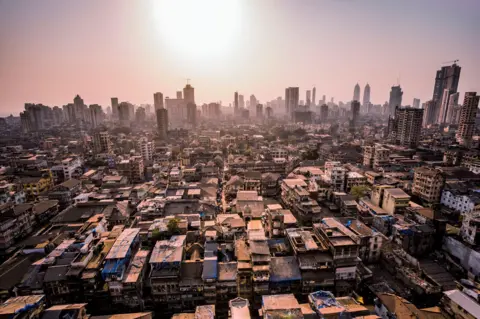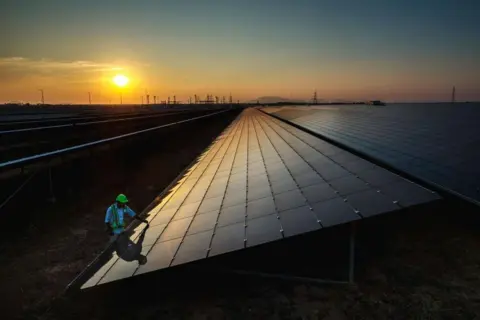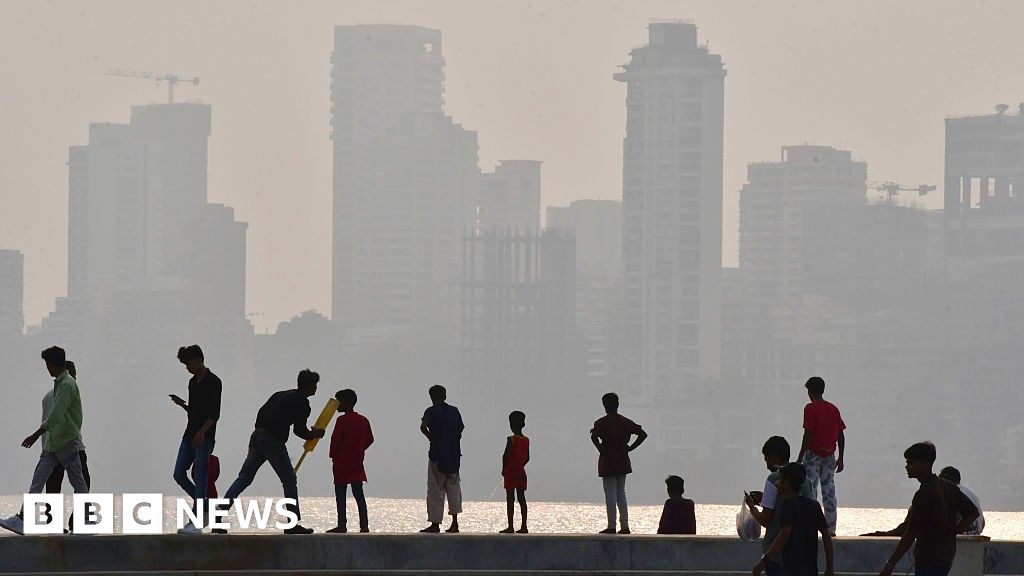Soutik BiswasIndia correspondent
 Hindustan Times via Getty Images
Hindustan Times via Getty ImagesIndia is losing sunlight.
A new study by six Indian scientists finds that over the past three decades, sunshine hours – the time direct sunlight reaches the Earth’s surface – have steadily declined across most of India, driven by clouds, aerosols and local weather.
Data from 20 weather stations from 1988 to 2018 shows a persistent decline in sunshine hours nationwide, with only the northeast region seeing a mild seasonal reprieve, according to the paper published in Scientific Reports, a peer-reviewed journal published by Nature Portfolio.
Scientists from Banaras Hindu University, the Indian Institute of Tropical Meteorology and the India Meteorological Department report that the steepest annual declines occurred in the northern inland region – notably Amritsar and Kolkata – as well as along the Himalayan belt and the west coast, particularly Mumbai.
All of nine India’s geograpically diverse regions showed an overall annual decline in sunshine hours, though the rate of decrease varied across India. Monthly analysis revealed significant increases from October to May, followed by sharp drops from June to July in six of the nine regions.
This seasonal pattern of sunshine intersects with a deeper, long-standing problem: India’s severe air pollution crisis – it’s now among the world’s top 10 polluted countries – which scientists trace back to the 1990s. Rapid urbanisation, industrial growth and land-use changes drove up fossil fuel use, vehicle emissions and biomass burning, sending aerosols into the atmosphere and dimming the Sun’s rays.
 Getty Images
Getty ImagesIn winter, high air pollution from smog, temperature inversions and crop burning across the Indo-Gangetic plains produces light-scattering aerosols, which reduce sunshine hours.
These aerosols – tiny solid or liquid particles from dust, vehicle exhaust, crop burning, and other sources – persist in the air long enough to affect sunlight, climate and health.
During June-July, monsoon clouds blanket much of India, sharply reducing sunlight even though aerosol levels are lower than in winter.
Scientists note that higher sunshine hours from October to May don’t indicate cleaner air; rather, they reflect more cloud-free days. Hazy winter sunlight may scatter or diffuse, lowering intensity without entirely blocking sunshine, which instruments still record as sunshine hours.
“Our study found that shrinking sunshine hours are linked to clouds that linger longer without releasing rain, blocking more sunlight. These longer-lasting clouds form indirectly due to aerosols that alter weather and climate,” says Manoj Kumar Srivastava, a professor of geophysics at the Banaras Hindu University, and one of the authors of the study.
Aerosols have reduced the amount of sunlight reaching the ground in India by about 13%, while clouds accounted for an additional 31-44% drop in surface solar radiation between 1993 and 2022, according to Sachchida Nand Tripathi, an atmospheric scientist at the Indian Institute of Technology (IIT) Kanpur.
These patterns raise concerns for agriculture, daily life and India’s solar energy ambitions, while highlighting where solar panels could be most effective.
Solar now makes up 47% of India’s renewable energy capacity. The government says it’s on track for 500GW of renewables by 2030, with more than 100GW of solar installed as of early 2025. But declining sunlight could cast a shadow on the country’s solar ambitions.
According to Prof Tripathi, air pollution compounds the problem. It reduces solar panel output by 12-41% depending on the type of photovoltaic system – the technology that converts sunlight into electricity – and costs an estimated $245-835m in lost power generation.
 LightRocket via Getty Images
LightRocket via Getty ImagesStudies also show that cleaner air could boost India’s annual solar energy production by 6-28 terawatt hours of electricity – enough to power millions of homes for a year.
But the impact of pollution doesn’t stop at solar energy. It also takes a heavy toll on agriculture, causing an estimated 36–50% loss in crop yields – mainly rice and wheat – in the country’s most polluted regions, according to Prof Tripathi.
India isn’t alone in losing sunshine; across the world, rising air pollution and shifting weather patterns have dimmed the skies.
A study published in Atmospheric Chemistry and Physics observed that Europe likely experienced reduced sunlight reaching the ground because of air pollution between1970–2009. In Germany, sunshine hours decreased by approximately 11% from 1951 to 1980, attributed to industrial gas emissions and associated cloud formation.
Research also showed that stricter clean-air laws in the 1990s led to a rebound in sunshine hours across Europe.
China also experienced a significant decline in sunshine hours from the 1960s to the 2000s, primarily due to increased aerosol emissions from rapid industrialisation. Sunshine duration varied across Chinese cities, with some areas experiencing more significant declines due to factors such as air pollution.
The good news: scientists say the Earth’s surface has gradually been receiving more sunlight since the 1980s – a trend known as global brightening, following decades of dimming.
New analysis of satellite data from 1984 to 2018 appears to confirm this, showing the effect is strongest over land and in the Northern Hemisphere, driven mainly by falling aerosols in the 1980s and 1990s and shifts in cloud patterns.
The bad news: heavily polluted countries like India are missing out. If the Sun keeps hiding behind smog, India risks running on fumes instead of full power.




